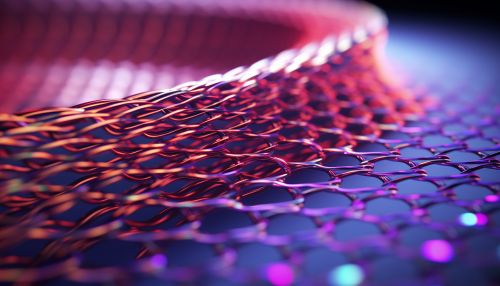Advances in Nanostructured Superconductors
Introduction
Superconductors have intrigued scientists and engineers for over a century, with their ability to conduct electricity with zero resistance. The discovery of high-temperature superconductors in the 1980s opened up new possibilities for practical applications. However, it is the recent advances in nanostructured superconductors that have truly revolutionized the field. These materials, which have features on the nanometer scale, have shown remarkable properties that could lead to a wide range of applications, from energy storage to quantum computing.


Nanostructured Superconductors
Nanostructured superconductors are materials that have been engineered at the nanometer scale to enhance their superconducting properties. This can be achieved through a variety of methods, including chemical vapor deposition, molecular beam epitaxy, and ion implantation. These techniques allow for precise control over the material's structure, enabling the creation of superconductors with superior properties.
Advances in Nanostructured Superconductors
The field of nanostructured superconductors has seen significant advances in recent years. These advances have not only improved our understanding of superconductivity, but also opened up new possibilities for applications.
Enhanced Critical Current Density
One of the most significant advances in nanostructured superconductors is the enhancement of the critical current density. The critical current density is the maximum current that a superconductor can carry without losing its superconducting state. By engineering the material at the nanometer scale, scientists have been able to significantly increase this critical current density. This has potential applications in power transmission, as it allows for the transmission of larger amounts of electricity without energy loss.
Improved Flux Pinning
Another important advance in nanostructured superconductors is improved flux pinning. Flux pinning is the ability of a superconductor to trap magnetic flux lines, preventing them from moving and causing resistance. Nanostructured superconductors have shown superior flux pinning properties, which can improve the stability and performance of superconducting devices.
High-Temperature Superconductivity
Nanostructured superconductors have also contributed to advances in high-temperature superconductivity. By manipulating the material at the nanometer scale, scientists have been able to create superconductors that operate at higher temperatures. This is a significant breakthrough, as it reduces the need for expensive cooling systems and makes superconductors more practical for everyday use.
Applications of Nanostructured Superconductors
The advances in nanostructured superconductors have opened up a wide range of potential applications. These include:
Energy Storage and Transmission
Nanostructured superconductors have the potential to revolutionize energy storage and transmission. Their high critical current density and superior flux pinning properties make them ideal for use in superconducting magnetic energy storage systems and power transmission lines. These applications could significantly reduce energy loss and improve the efficiency of our power grids.
Quantum Computing
The unique properties of nanostructured superconductors also make them promising candidates for use in quantum computing. In particular, their ability to trap magnetic flux lines could be used to create stable qubits, the basic units of information in a quantum computer.
Medical Imaging
Nanostructured superconductors could also have applications in medical imaging. Their high critical current density and superior flux pinning properties could improve the performance of MRI machines, leading to clearer images and more accurate diagnoses.
